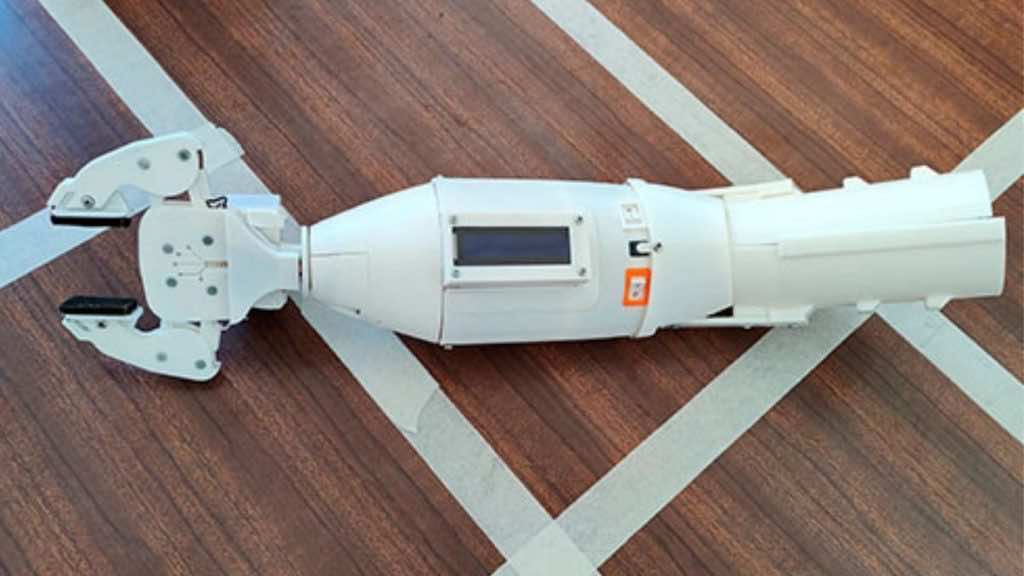The Arm2u biomedical engineering team from the Barcelona School of Industrial Engineering (ETSEIB) of the Universitat Politècnica de Catalunya has designed and constructed a configurable transradial prosthesis that works in response to the user’s nerve impulses with the help of 3D printing technology.
Arm2u is a prosthesis that can replace a missing arm below the elbow. It is monitored with myoelectric control, which means that it is controlled by the natural electrical signals produced by muscle contraction.
The team developed the first prosthesis last year and this year, they have a second prototype—a fully functional robotic arm. It is based on EMG sensors, which gather the instructions from a patient’s muscle contraction and transform these electrical impulses into a signal that the microcontroller can read and use.
Lluís Bonet Ortuño, one of the team leaders said:
“One of our main goals when developing the prosthesis was to make a prototype with affordable technologies so that it could be produced and modified constantly without a high cost. Using 3D printing, we have created a prosthesis at a much lower cost than similar prostheses on the market.”
The prototype, which was entirely created by the Arm2u team, consists of four key components that work together to enable mobility:
- The socket that connects the device to the limb
- The prono, which stores most of the electronics and has the prosthesis’ control and status information components
- The gripper, a clamp-shaped component to manipulate objects.
- The electronic component uses an Arduino Uno microcontroller to connect the sensors, motors, and other components.
The second model is light and has an inbuilt LCD screen that constantly updates information about the prosthesis’ state, including its battery life, the effort required by the fingertips, interior temperature, and more.
“The team aims to develop new prostheses to help people in everyday life and continue research in biomedical engineering. We want to become a leading university team for all students who want to learn about this area, and we are open to working with anyone who shares our concerns,” said team leader Aleix Ricou.
The team is divided into three departments for efficiency: mechanics, electronics, and management.
The mechanics’ department oversees creating a conceptual CAD model, both kinetic and static simulations, choosing materials, and researching manufacturing systems. The electronics department controls the multiple actuators in the prosthesis and the acquisition of myoelectric signals.

